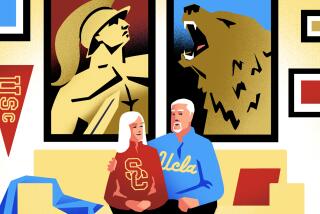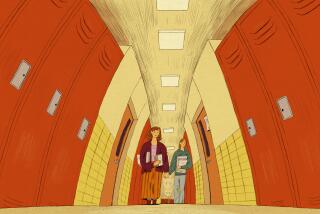AD-LIBBING WITH THE CLASS OF ’47
In some ways, attending a college reunion is like a recurring dream I have in which I am on stage to perform in a play, except that I’ve never read the play and have no idea what to say or who the other characters are. (It seems to be a fairly universal dream, like the one about sitting for a final exam in a course you haven’t taken.)
I always abandon the dream about the time the first murmurings of discontent come across the footlights, but the college reunion is a waking reality. A certain amount of light-foot improvisation is required until the cast of characters becomes familiar and a plot line of some sort emerges. There is a lot of bifocal squinting at name badges (fortunately printed large).
As I’ve noted before, the Class of ’47 commenced early in wartime, paused for military service and finished up after the war, all of us on slightly different timetables so that we never developed the cohesion of peacetime classes.
What therefore surprised and touched me was the warmth and informality of the gathering. Names and faces and memories came together like a film snapping into focus. I had always felt like an outsider from the hinterland, not like a Harvard person (whoever he may be). But time has a way of ameliorating those ancient differences in favor of the remembered amusements of a shared past.
I hadn’t been to a class reunion in 15 years and hadn’t seen most of my classmates for 25 years before that. I wasn’t sure what to expect, but I had a hunch that simple survival would be the achievement that was topmost in everybody’s thoughts, whether it was voiced or not.
My hunch was right. The talk was of remote escapades, and of families and children, the triumphs and tragedies of personal lives. If there was a certain amount of bragging--and it may betoken a new and widening American phenomenon--it was about how early the speaker had retired.
“Sold out or opted out when I was 44 (or 39 or 50 or two years ago) and been traveling and consulting ever since” would do as a kind of composite quote for the week.
It was also a principal theme, I noticed, in the brief biographies in the red-covered class report, an engrossing if repetitive paperback that is published every five years and that appeared just before the reunion.
“My wife retired three years ago and is waiting for me to give up IBM,” one classmate said. “I plan to work 100 days a year,” another wrote. Almost nobody admits to devoting themselves entirely to the sweet doing of nothing. A lot of heavy volunteerism is reported, but consulting is obviously the great American semiretirement.
More than half of the 906 surviving members of the class answered an anonymous questionnaire and nearly a quarter of those who replied said, on the other hand, that they have absolutely no intention of retiring. What they are doing--law and investment banking among other endeavors--is just too satisfying to abandon, they reported.
(I’m with them; I could no more imagine not writing than volunteering to give up breathing.)
A few of the other statistics were interesting: for example, that more than two-thirds of the class members are still married to their first wives, and almost exactly the same percentage (69%) are trying conscientiously to cut down on cholesterol. There is probably a connection.
Our median income from all sources is between $75,000 and $100,000 a year. But 7% say their income is less than $15,000 a year. At the other end, 6% say they have more than $250,000 a year. More than half of us used to smoke; only 15% still do.
I was glad to see that 86% of us still go to the movies, some as often as once a week. Almost as many are concertgoers, and the most faithful say they attend 100 concerts a year.
Part of the lure of the reunion was that it was held in Newport, R.I., not in clotted Cambridge. There was plenty of time to explore those astonishing turn-of-the-century marble cottages between Bellevue Avenue and the sea. We wandered through Cornelius Vanderbilt’s The Breakers, on which 2,000 workmen labored for two years. It shows what you could do with a million dollars in 1895; what is not certain is whether it could be replaced today at any price, assuming anyone would want to.
We had a genuine clambake one evening at Bailey’s Beach and, learning being a lifelong experience, I learned that the aroma of steaming seaweed is one I can live without. There was a dinner-dance at another of the marble palaces, the Oelrich family’s Rosecliff, during which some ancient rites of the jitterbug were quite miraculously revived.
There were talks by Arthur Hartman, a classmate lately retired as ambassador to the Soviet Union, who was guardedly, very guardedly, optimistic about improved relations between the countries, and by William Middendorf, another diplomatic classmate who is ambassador to the European Community in Brussels and who finds a rush to private enterprise the major theme in that world.
My family’s origins were in Rhode Island, and in the Newport Historical Society I found mention of a distant Champlin who had been in the Senate and had fought a duel, seconded by John Rutledge of South Carolina. A Miss Champlin, I read in a book of local reminiscences, had had the honor of the first dance with George Washington at a ball in his honor in Newport in 1791. It was after that, obviously, that the family fell into journalism and other low pursuits.
The Newport days thus became a sort of double immersion in the past, and such voyages to yesterday are always dangerous and fraught with the peril of disillusion. But this was instead a time of grateful reacquaintance and small revelations.
More to Read
The biggest entertainment stories
Get our big stories about Hollywood, film, television, music, arts, culture and more right in your inbox as soon as they publish.
You may occasionally receive promotional content from the Los Angeles Times.










